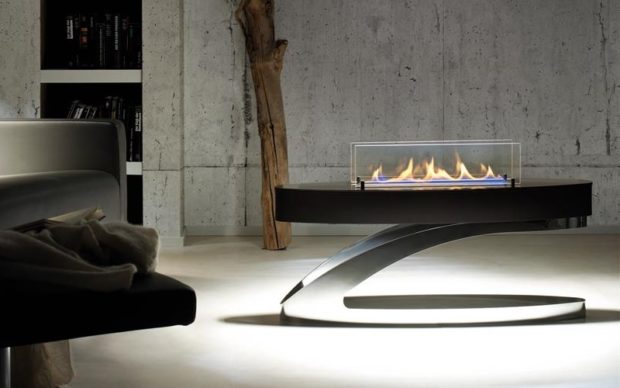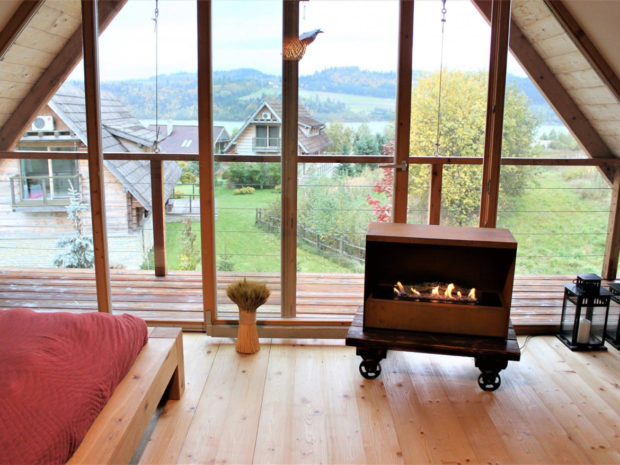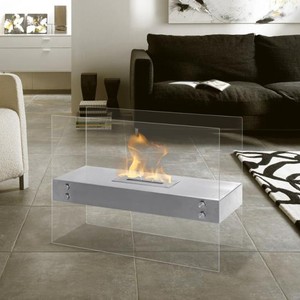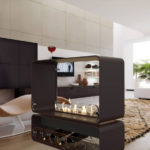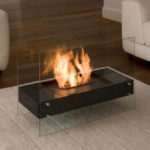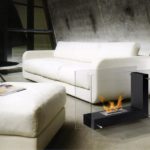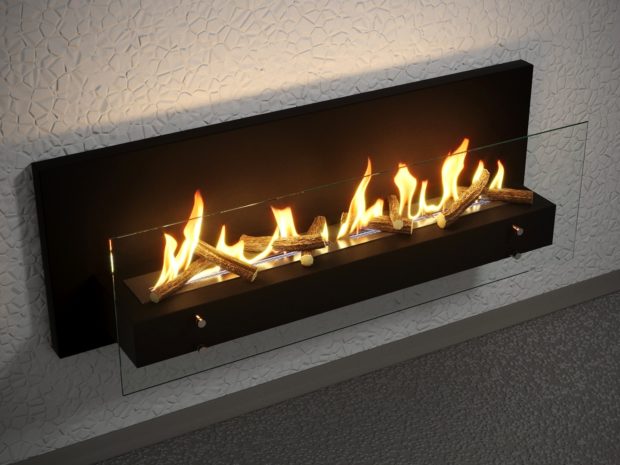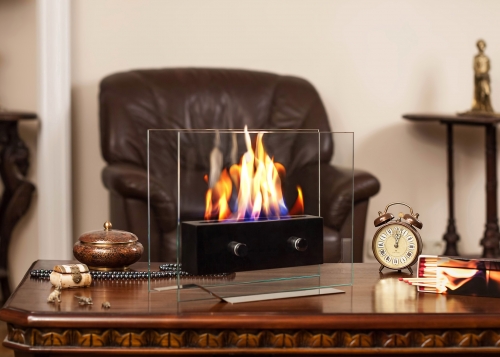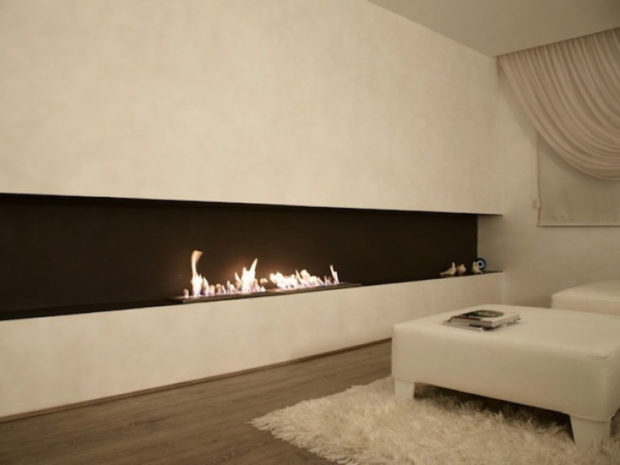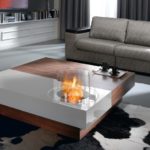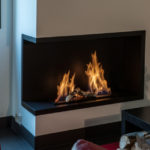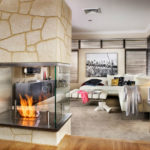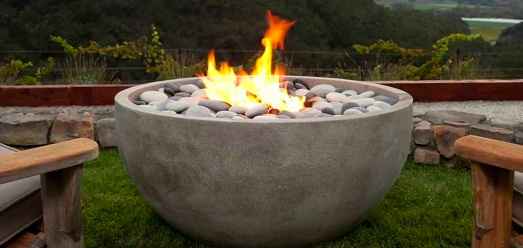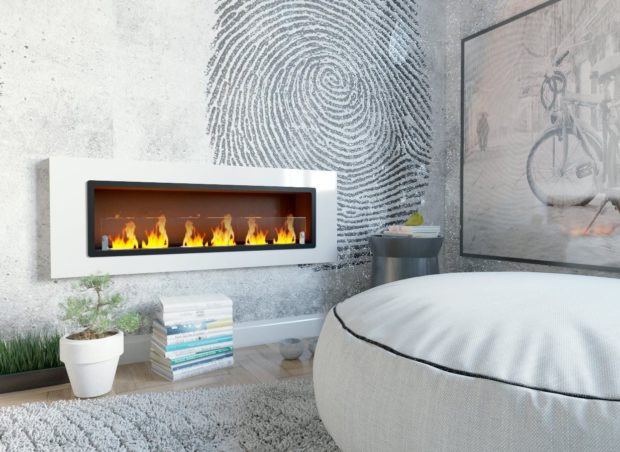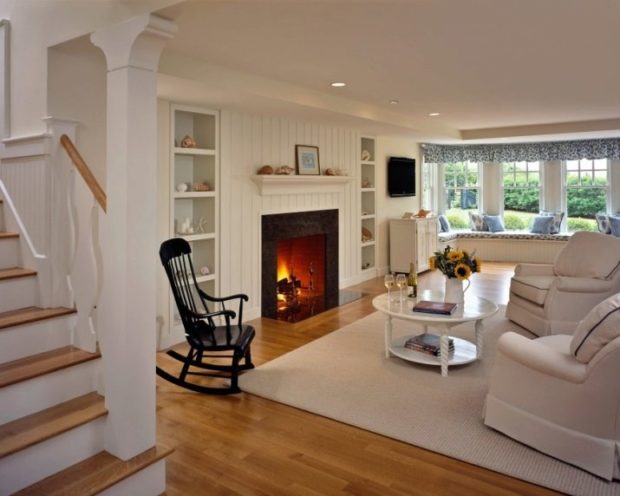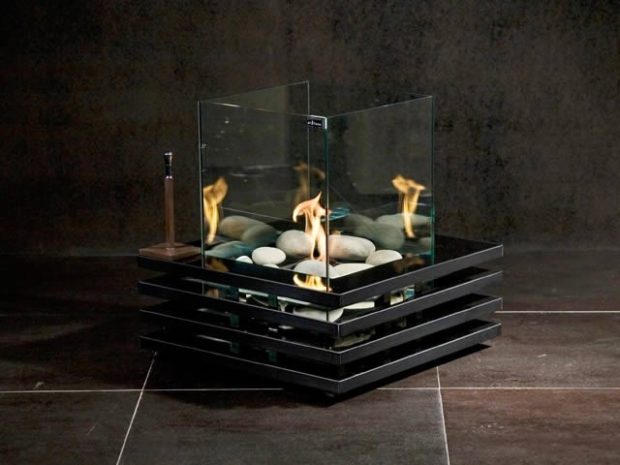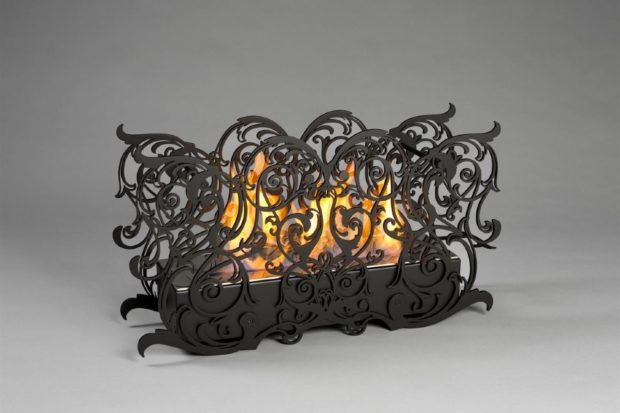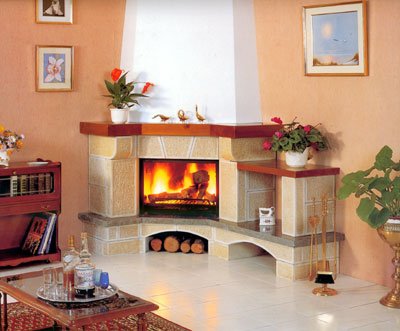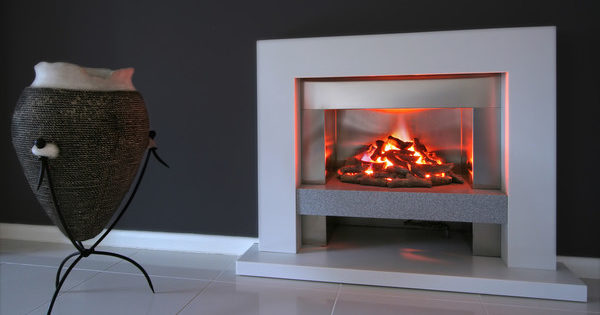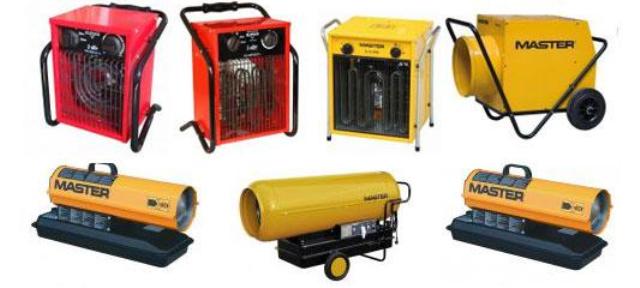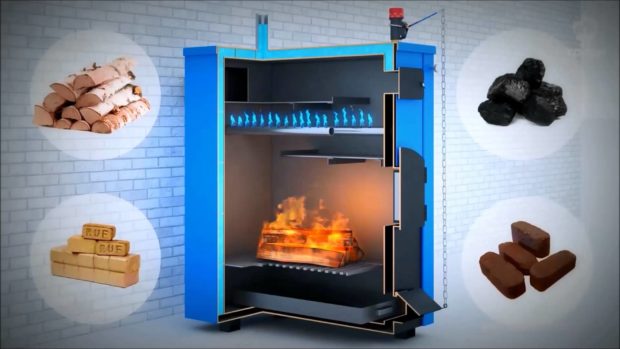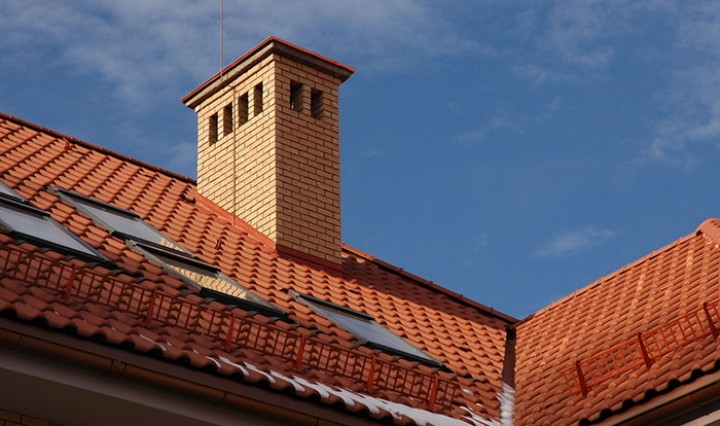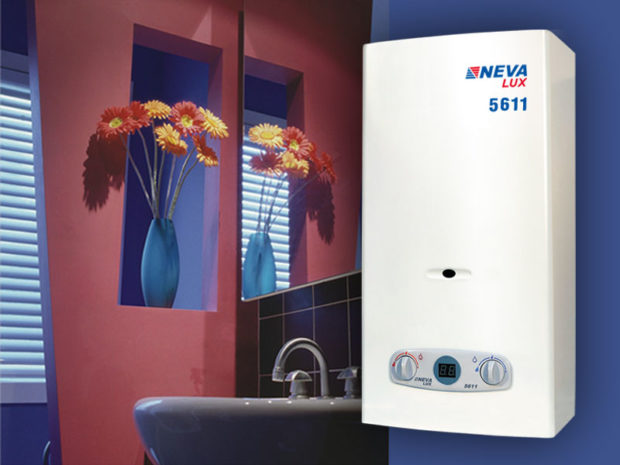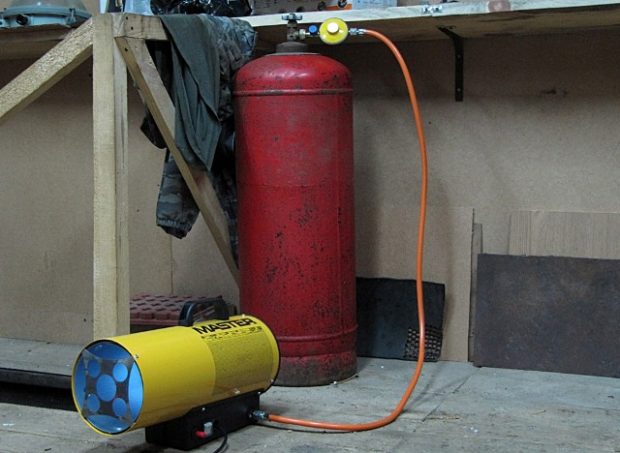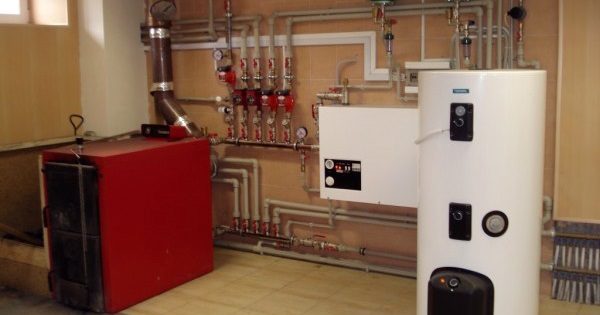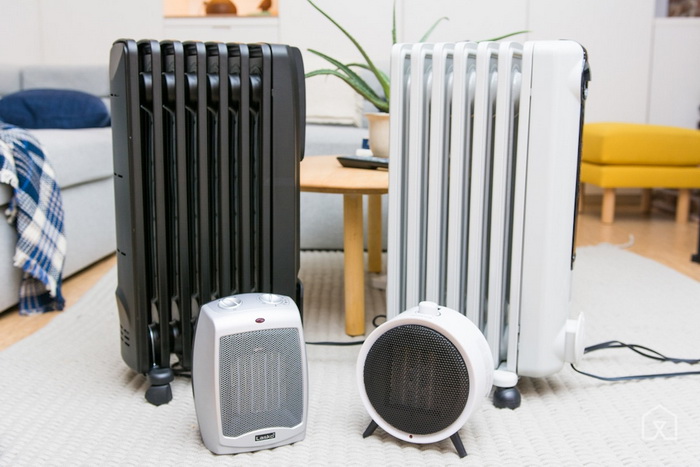Biofireplaces for apartments and villas: 7 tips for choosing, advantages and disadvantages
The fireplace in the house is the dream of many, but, unfortunately, in the conditions of an ordinary city apartment, this dream remains unfulfilled. Of course you can make a false fireplacebut this is only a parody of a real hearth. You can go further and take an electric fireplace with an imitation of flame, but this is not a living fire, which one wants to watch in your apartment. To enjoy the real flame with its warmth, it is not necessary to build stationary fireplace and equip a chimney - you can take a biofireplace. Modern development is easy to operate, does not require the installation of a chimney, gives real fire and can be installed almost anywhere. What are bio fireplaces for an apartment? What are their advantages and disadvantages? What types are they? Consider these modern foci from all sides.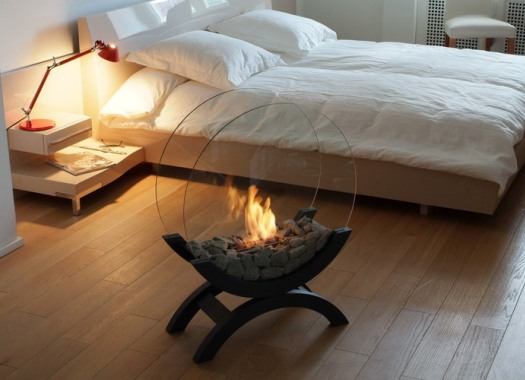
No. 1. How does a bio fireplace work?
Biofireplace is a relatively new invention. Its author is the Italian Giuseppe Luchifora, who designed the first biofireplace in 1977. Did he then think that his invention would become so popular! Today biofireplaces are actively used in interior design urban apartments and country houses. They are often installed outdoors, at the cottage, eg. What served so widespread the device? To answer this question, you need to understand the principle of the biofireplace and its main components.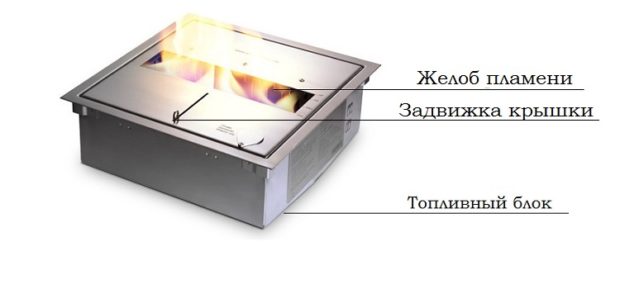
A biofireplace is completely different from a regular wood burning fireplace. To obtain a flame, special fuel (bioethanol) is used, which is poured into the tank and ignited. Fuel burns without emitting carbon monoxide and other harmful products. This is for short. To delve into the process of a biofireplace, you must to study its structure:
- burner It is made of non-combustible materials (steel, ceramics, stone) and decorated with sand, real stone, or imitation of firewood and coal. All elements that cover the burner must be non-combustible;
- fuel tank, where bioethanol is poured, has a volume of from 0.7 l to 3 l, in rare cases more. The larger the tank and the more fuel you can pour into it, the longer the continuous burning process will be. On average, 1 liter of fuel is enough for 2-3 hours of operation of the fireplace. You can add a new portion of fuel only after the device has cooled down. Kindle fire by offering special long lighter. You can use fireplace matches, but curled pieces of paper are dangerous to use. In automatic biofireplaces, the ignition process is simpler - by pressing a button;

- biofireplace fuel obtained from sugar-rich crops. When burned, it decomposes into carbon dioxide and water vapor. No soot, soot and smoke, therefore chimney to equip unnecessary, but good ventilation not prevent. Experts compare the biofireplace with an ordinary candle by the level and nature of the emissions. Some bio-fireplaces burn bio-ethanol fumes;
- portal usually made of tempered glass. This material steadily withstands heat and provides you with unhindered admiration for fire from different angles. Power and flame height can be adjusted thanks to a special shutter, but the tongues of fire will never be above the glass barrier;

- frame - This is the skeleton of a biofireplace. All functional parts of the product, as well as decor, are attached to it. The frame provides stability on the floor, mounts to the wall (for wall models). The decor can be different, it completes the look of the fireplace and makes it a bright detail of the interior;
- maybe some additional components, which significantly expand the functionality of the biofireplace. For example, a system of sensors that monitor work, sound design, buttons that turn on automatic fireplaces. Some devices can be controlled by the remote control or even using a smartphone.

Flame intensity are regulated by flap covers. When you move it, the flow of oxygen to the burner decreases or increases, which determines how large and powerful the flames are. By blocking access to oxygen, you can completely extinguish the fireplace.
A biofireplace is bought and installed, first of all, for the beauty and feeling of comfort of the hearth. However, the benefits of him are not limited to this. Since there is real fire in the fireplace, heat comes from him. Biofireplace can be compared with heater up to 3 kW, it can easily heat air in relatively small room (about 30 m2), but as a replacement for the heater it is not considered, and tempered glass is not able to retain stored heat for a long time.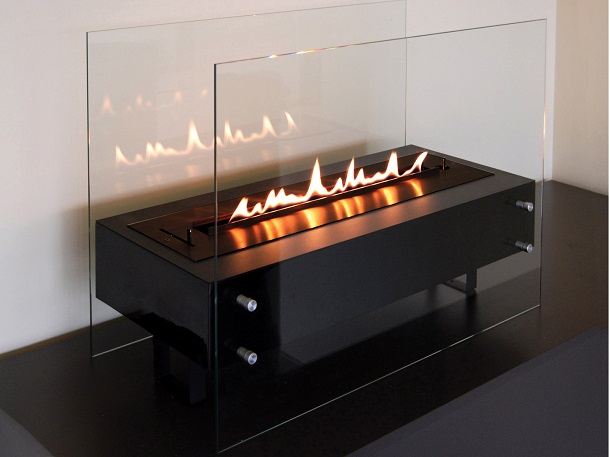
If in a traditional fireplace, heat losses due to the exhaust system reach up to 60%, then in a bio fireplace, only 10% is lost - the remaining 90% goes to heat the room.
As for ventilation. A chimney for a biofireplace is not needed, but good ventilation should be equipped. However, this requirement also applies to apartments where there is no bio-fireplace. If you feel that home ventilation is not working, you will sometimes have to open the windows and ventilate.
Biofireplaces can be very different in shape, so this item will fit perfectly into any interior style, from classic to hi-tech.
No. 2. Biofireplace: advantages and disadvantages
All the advantages of a biofireplace are clear from the principle of its operation. Manufacturers say that such foci have no drawbacks at all, but those who have already bought a biofireplace know that there are still disadvantages. Let's be objective and list all the pros and cons of such portals.
The main advantages of biofireplaces:
- the ability to install in a city apartment. To equip a chimney, you will not need to obtain permits;
- unique decoration of the interior;
- universality. Biofireplace can be put in any room, and can be installed even on the street. Often decorated with such fireplaces recreation area in the country;
- relaxation, relaxation and aesthetic pleasure from contemplating the flame;
- live fire, according to doctors, improves well-being and helps restore energy;

- biofireplace gives heat, so in winter you can not only admire, but also bask. What you need for long cold evenings;
- simplicity in operation. No special skills are required to turn on the biofireplace. Each of us can exploit such a hearth, if, of course, I am ready to observe some safety rules;
- security. Carbon monoxide does not form during combustion;
- biofireplace does not dry the air - on the contrary, it helps to moisturize it, and in winter it is very necessary. In the process of combustion, water vapor is released, which saturates the air with moisture;

- table and floor fireplaces are mobile, they can be moved from place to place, taken out into the street. Naturally, the built-in models lack such mobility. You don’t particularly move those fireplaces that are equipped with additional functions, the implementation of which requires connecting to a power outlet. However, most bio fireplaces do not require a network connection;
- huge assortment. Fireplaces differ in shape, size, decor, so choosing a suitable model is not difficult.If the store did not find anything suitable, you can make a fireplace of the necessary shape to order. Moreover, a biofireplace can be integrated, for example, into a transparent partition between the kitchen and the living room. There may be a lot of solutions.

When deciding to buy a biofireplace, you need to know about some of its minuses:
- high-quality biofireplaces - an expensive pleasure;
- since a real fire burns in the hearth, one should be extremely careful and careful. This is not for you electric fireplaceso that all flammable objects are best removed from the immediate vicinity. Only a chilled fireplace should be refueled, and do this with extreme caution;
- you will not hear the cod of logs, because this is not a traditional fireplace. If this cozy sound is fundamental for you, then it is better to refuse to buy a bio-fireplace. However, the manufacturer has already learned how to “sound” fireplaces - the most advanced models can, if necessary, include the recorded sound of burning firewood;
- if you decide to build a fireplace in the wall, and on top position the tv panel, you will have to equip a heat-insulating screen, since a significant amount of heat comes from the fireplace, which can damage the equipment;
- some users complain of a thin, but not very pleasant smell of fuel, although manufacturers say that it has no smell. Some note that with a long work of the fireplace, eyes begin to watery. At the same time, some do not notice any changes at all. Most likely, the point is not the sensitivity of smell, but the quality of ventilation. It is still very important when at home several hours in a row an open fire burns. So before buying, make sure that enough fresh air comes into the room. If you are going to put a fireplace in the kitchen or bathroom (ventilation always works well there), on the balcony or in the summer cottage, then there should be no problems. Equally important is the quality of the fuel. Attempts to save money lead to sad results, and high-quality fuel has almost no smell;
- you have to constantly buy fuel, a liter of which costs about 200-300 rubles.

No. 3. Types of bio-fireplaces by installation method
Diversity is one of the key benefits of bio fireplaces. According to the installation method, they are:
- outdoor. They can be mobile and stationary. Portable options are more widespread. They can be placed on any flat surface, even on a wooden floor, and moved if desired. As a rule, these are large enough devices that are placed in the middle of the room or near the wall (wall biofireplace). The case is filled with metal, stone, glass, ceramics, sometimes elements of wood are used - there are a lot of options. Such fireplaces are as simple as possible to install. In fact, you just need to bring it from the store, pour fuel, light a flame and enjoy;
- wall mounted mounted on a vertical surface to the brackets. As a rule, they are small in size, not more than 1 m in length and 15-25 cm in depth, but much more bulky designs can be made to order;

- table fireplaces often also called bio-candles, bichas and bio-flasks. These are compact devices that can be put on diningworking or coffee table, and even on the shelf. Such products look very cool, have the shape of a bowl, cylinder, oval or rectangle;

- recessed fireplaces mounted in niches in the wallsas well as furniture (for example, a countertop). It is better to prepare a recess for installing a fireplace at the stage of repair or construction, but you can do it later. The main thing is to choose a suitable wall and how to protect it with flame-resistant materials;

- corner fireplace can be wall or floor mounted in a corner, saves space;

- outdoor fireplaces more home, installed in the courtyard, on the roof, about basinin the barbecue area, etc. They have the shape of a hearth or get an elongated structure. A gathering near such a hearth will be remembered for a long time.

Number 4. Degree of automation, or mode of operation
All biofireplaces can be divided into two large groups:
- mechanical;
- automatic.
Mechanical simpler, cheaper, do not require electricity, but also less functional. You will have to manually not only fill the fuel, but also bring the lighter, and you will also extinguish the flame manually, pushing the damper and blocking the access of oxygen. There is nothing complicated about it.
Automatic biofireplaces are equipped with a touch panel and often a small display. You can turn on, turn off and adjust the flame by pressing the buttons. Also, such fireplaces receive a multi-level security system: sensors monitor the level of fuel, the burning of the flame, and sometimes - also the content of carbon dioxide in the air. There are fireplaces that can be controlled remotely: at least - using the remote control, at least - using a smartphone or tablet. Convenient, thoughtful, but expensive, and even the food all these bells and whistles must be provided.
No. 5. Safety and choosing the right place for a biofireplace
Undoubtedly, a biofireplace is much safer than its traditional counterpart, but it also has fire, so in order to avoid unpleasant and catastrophic consequences, you must be extremely careful and follow some rules:
- There should not be any flammable objects nearby. These include curtains, tablecloths, bedspreads and other textiles, paper wallpaper etc. If the fireplace is located on the wall or inside it, it is better to remove paintings and photographs from the immediate vicinity;
- it is better not to push the floor fireplace close to the wall - leave a gap of 20-30 cm for better circulation of warm air;

- it is better not to put a fireplace on a draft;
- the distance from the fireplace to the TV and other electrical appliances should be at least 1 m;
- Do not forget to clean the fireplace from dust. Special tools are provided for cleaning the glass of biofireplaces. Cleaning is carried out after the fireplace has cooled down;
- if it spills during fueling, thoroughly wipe all drops with a well absorbent material. Otherwise, the fire can spread far beyond the burner;

- the size of the fireplace should correspond to the dimensions of the room. In a large room, a massive outdoor fireplace will look beautiful and proportionate. If there is not so much space, you can take a closer look at the wall or niche options. For the smallest spaces compact desktop fireplaces are provided. An alternative is to integrate the fireplace into furniture, for example, into a coffee table;
- once again recall the need to organize ventilation of the room. In the process of burning fuel, oxygen is consumed, so the influx of fresh air is simply necessary. A slightly open window or exhaust ventilation valve will help to remove exhaust air with a high content of carbon dioxide. Without a hood and a chimney, a biofireplace is not dangerous, but the organization of ventilation is the key to your comfort.

No. 6. Fuel for a biofireplace
How to produce fuel for biofireplaces? Vegetable crops with a high content of sugars and starch are suitable as raw materials. These are beets, reeds, grains, legumes, potatoes and some other crops. First, the raw materials are ground, then fermented, saturating the mass with yeast mushrooms, and then filtering. As a result, it is possible to obtain 15% ethanol, which then undergoes distillation and processing, which increases the concentration of ethanol. Then they add additives and get bioethanol, a completely natural fuel, which burns with the formation of carbon dioxide and water.
Ethanol burns with a blue-yellow flame (blue below, tongues orange), and to maintain aesthetics, manufacturers add special substances to the fuel that change the color of the flame to a cavity of orange. If the manufacturer is unscrupulous, and used not very high-quality ethanol, and even added not the best "dye", then unpleasant odors can not be avoided.
Some craftsmen make fuel for a biofireplace yourselfmixing 70% ethanol and gasoline for refueling lighters, but it’s better not to conduct such experiments and buy ready-made fuel. It is sold in cans of 2, 2.5, 5 and 10 liters. About 0.35 liters of fuel are burned in 1 hour. Automatic fireplaces, as a rule, are equipped with special modes that save bioethanol.
There are bio fireplaces that "feed" on helium fuel. These are compact products filled with stones. Such a fuel burns without smells, but soot forms on the fireplace over time.
Number 7. Manufacturers of bio-fireplaces and prices
For a biofireplace to be of high quality and durable, it must be manufactured in accordance with all requirements. The main guarantee that suitable materials were used in production and that all norms were observed is the name of the company. Large market players will not risk their reputation. There are leaders in the production of bio-fireplaces:
- Decoflame - Danish company. Denmark has a manufacturing facility, a design office and a laboratory for testing fireplaces. The company is relatively young (operating since 2007), but managed to conquer the whole world with its devices that combine high security, durability and interesting design. The company is engaged in its own development and has created a fuel-efficient technology, automatic fireplaces with built-in Bluetooth. They also made the world's longest biofireplace (8 m) and developed a monitoring system of 24 sensors. Fireplaces are expensive: the simplest and most compact are about 70-80 thousand rubles, and large automatic ones are more than 500 thousand rubles .;

- Kratki - A Polish company that has been operating for about 20 years, its representative offices are located in 50 countries of the world. Buyers bribed decor, quality and affordable prices. Table fireplaces cost from 5 thousand rubles, wall and floor - from 7 thousand rubles. Fireplaces with a unique design will cost 10-30 thousand rubles .;

- Glamm fire - Portuguese premium biofireplaces. They are expensive (from 150 thousand rubles), but allow you to get maximum pleasure from contemplating the fire;
- Art flame - American bio-fireplaces with a sophisticated design and relatively low price. Such fireplaces are installed in the apartments of the participants of the program “Housing issue”. Prices start from 18 thousand rubles .;

- Planika - An Australian-European enterprise that produces beautiful, high-quality, but very expensive bio-fireplaces;
- Safretti - Dutch fireplaces, which differ in a minimalistic, but always unique and interesting design. Prices are average;
- Bio-Blaze - A Dutch company that produces original fireplaces. For an apartment and a street you can find a device for 25 thousand, but there are much more expensive models;
- Silver smith - A large domestic enterprise, operating since 2011, produces reliable, certified according to international standards and attractive fireplaces. The desktop version will cost you from 6 thousand rubles., Wall and floor models - from 16 thousand;

- Bioer - The Russian company produces, without exaggeration, very interesting fireplaces. They rely on design, but they do not forget about quality. Prices start from 14 thousand rubles. Each model is a work of art;
- Directcheminee - French fireplaces that are sold by BioTeplo, average prices (from 70-90 thousand rubles for large floor models);
- Kronco - A young domestic company, makes cool fireplaces, but they also cost more than other our companies. Cool floor fireplace can be found for about 30-35 thousand rubles.

Naturally, there are other reliable companies, but do not forget to check reviews on their products, ask for documentation and clarify the warranty period.
Fuel costs about 300 rubles per 1 liter, but with the purchase of several bottles / cans at once, you can count on the price of 250 rubles per 1 liter.
Finally
Biofireplaces usually set in living rooms or on the streets. It is dangerous to put it in the bedroom due to the large amount of textiles. In order not to risk, abandon the biofireplace in small bedroom - in a large room, the installation of such a focus is allowed.In the kitchen and in the bathroom, a biofireplace is infrequently set in view of the small dimensions of these rooms. For the kitchen, as, by the way, and for the cabinet, a desktop biofireplace is perfect. Do not be lazy to clean the fireplace and always remember the safety rules.





